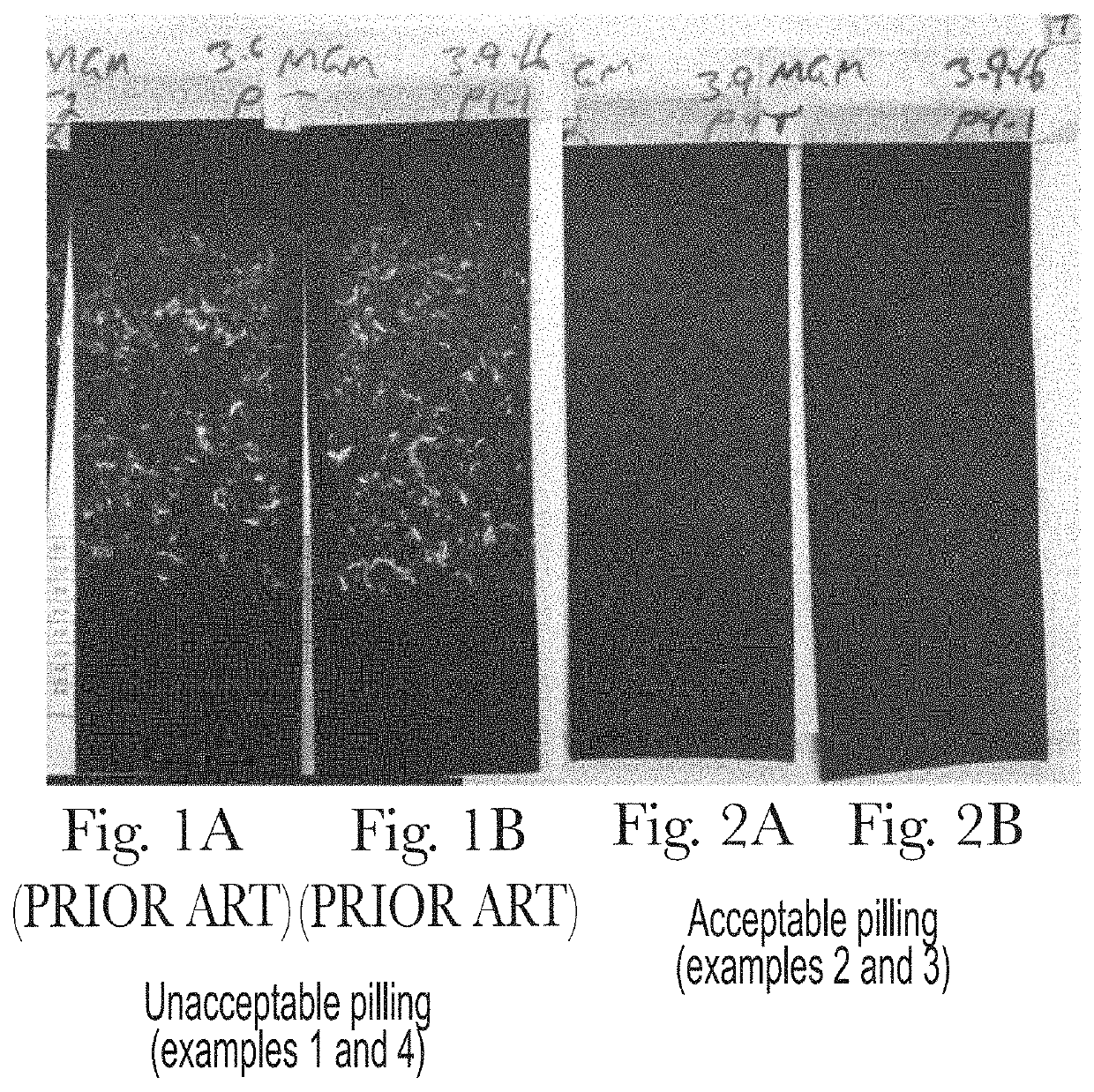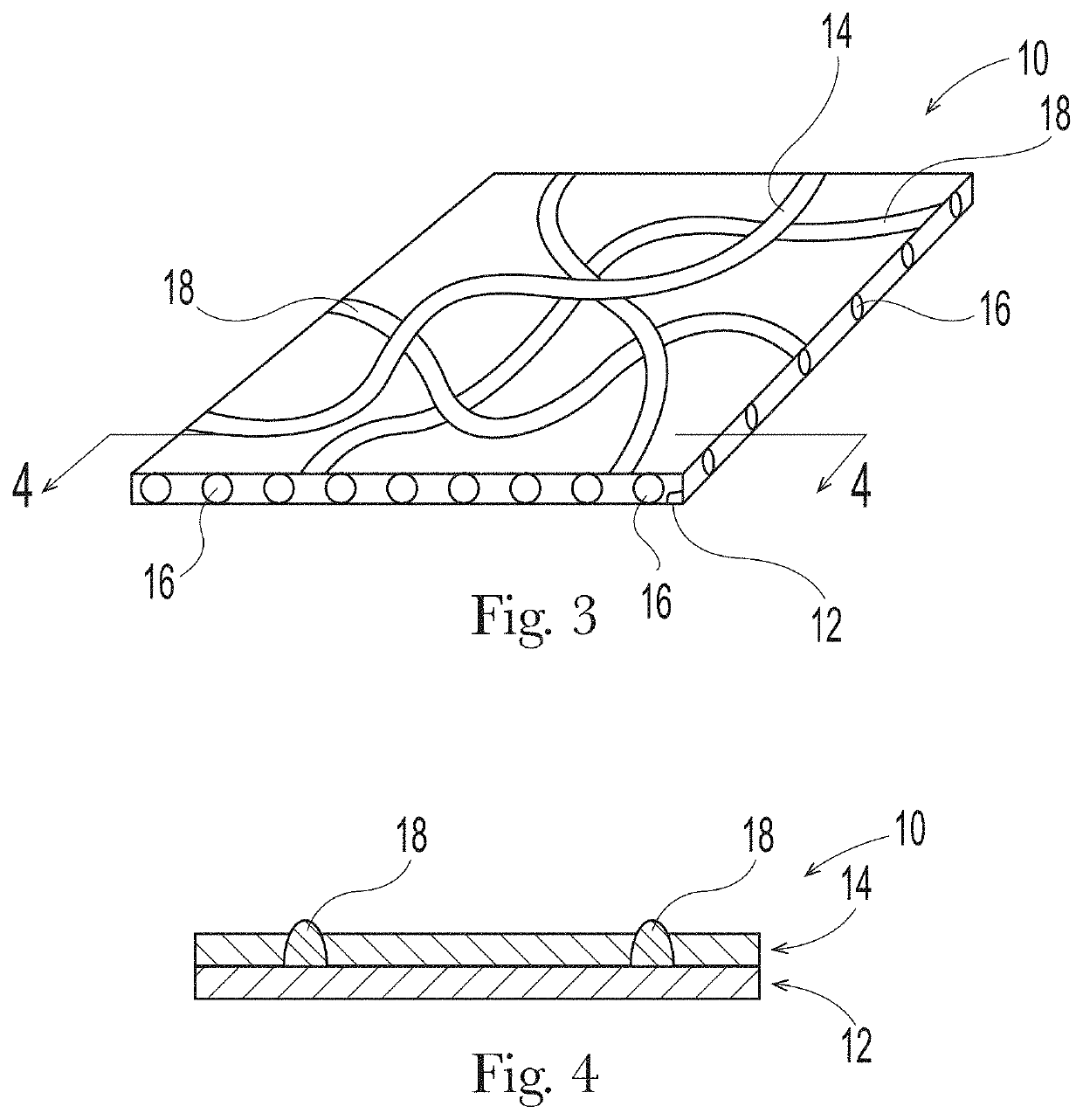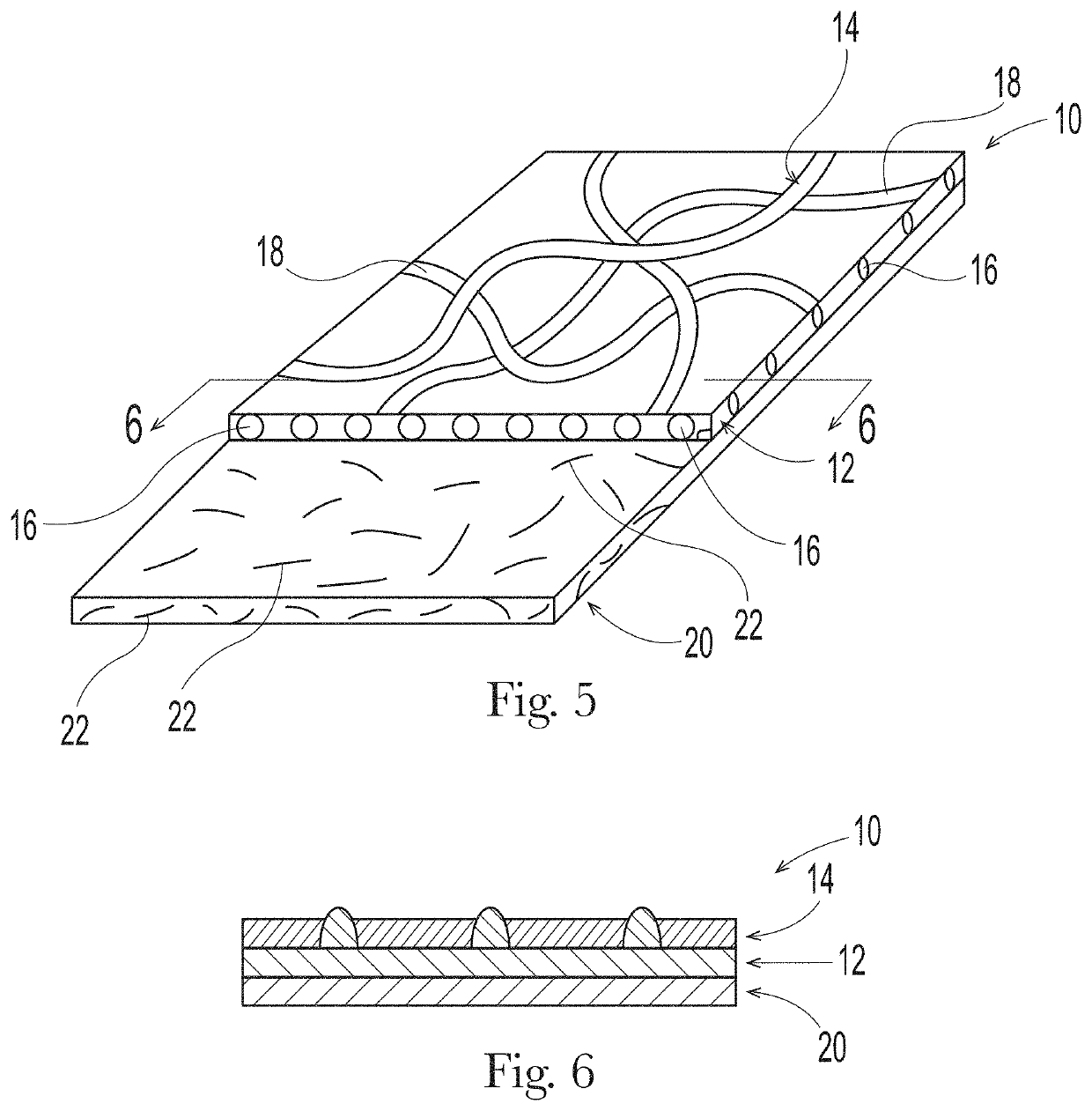Multi-ply fibrous structures
a fibrous structure and multi-ply technology, applied in the field of multi-ply fibrous structures, can solve the problems of layered fibrous structures, unresolved, and unacceptable pilling of fibrous structures during use by users, and achieve the effect of improving surface properties, such as feeling and/or gliding on skin
- Summary
- Abstract
- Description
- Claims
- Application Information
AI Technical Summary
Benefits of technology
Problems solved by technology
Method used
Image
Examples
example 2
Example (with Polyvinyl Alcohol Scrim Layer)
[0224]A layered fibrous structure is prepared according to Example 1 except an extra layer (a scrim layer) of polyvinyl alcohol filaments are formed onto the top of the starch filament / wet laid pulp layered fibrous structure.
[0225]The polyvinyl alcohol filaments are prepared by the following procedure. Mowiol 10-98 polyvinyl alcohol (98% hydrolysis Kuraray) having a weight average molecular weight of 50,000 g / mol and water are added into a scraped, wall pressure vessel equipped with an overhead agitator in order to target a 35 wt % polyvinyl alcohol melt. The 35 wt % solution is cooked under pressure at 240° F. for 4 hours until the resulting melt is homogenous and transparent. The Mowiol 10-98 polyvinyl alcohol melt is pumped via gear pump to a static mixer where a cross-linker and cross-linker activator are added. From the static mixer the melt is delivered to a melt blowing spinneret.
[0226]A plurality of polyvinyl alcohol filaments is a...
example 3
Example (with Polyvinyl Alcohol Scrim Layer)
[0228]A polyvinyl alcohol filament / starch filament / wet laid pulp web material layered fibrous structure is prepared according to Example 2 except a higher basis weight of polyvinyl alcohol filaments is present in the polyvinyl alcohol filament layer.
[0229]A plurality of polyvinyl alcohol filaments is attenuated with a saturated air stream to form a layer of polyvinyl alcohol filaments of 0.70 g / m2 that are collected on top of a starch filament / wet laid pulp web material layered fibrous structure. The resulting layered substrate from top to bottom is 0.70 g / m2 polyvinyl alcohol filaments / 8 g / m2 starch filaments / 21 g / m2 wet laid pulp web material layered fibrous structure. The resulting layered fibrous structure is then subjected to a thermal bonding process wherein thermal bond sites are formed between the polyvinyl alcohol filament layer, the starch filament layer, and the wet laid pulp web material. The thermal bond roll has a circle shap...
example 4
Example (with a Polyvinyl Alcohol Scrim Layer)
[0231]A polyvinyl alcohol filament / starch filament / wet laid pulp web material layered fibrous structure is prepared according to Example 2 except a higher basis weight of polyvinyl alcohol filaments is present in the polyvinyl alcohol filament layer and the polyvinyl alcohol exhibits a lower weight average molecular weight.
[0232]The polyvinyl alcohol filaments are prepared by the following procedure. Poval 4-98 polyvinyl alcohol (98% hydrolysis from Kuraray) having a weight average molecular weight of 25,000 g / mol and water are added into a scraped, wall pressure vessel equipped with an overhead agitator in order to target a 50 wt % polyvinyl alcohol melt. The 50 wt % solution is cooked under pressure at 240° F. for 4 hours until the resulting melt is homogenous and transparent. The Poval 4-98 polyvinyl alcohol melt is pumped via gear pump to a static mixer where a cross-linker and cross-linker activator are added. From the static mixer ...
PUM
| Property | Measurement | Unit |
|---|---|---|
| bulk density | aaaaa | aaaaa |
| bulk density | aaaaa | aaaaa |
| bulk density | aaaaa | aaaaa |
Abstract
Description
Claims
Application Information
 Login to View More
Login to View More - R&D
- Intellectual Property
- Life Sciences
- Materials
- Tech Scout
- Unparalleled Data Quality
- Higher Quality Content
- 60% Fewer Hallucinations
Browse by: Latest US Patents, China's latest patents, Technical Efficacy Thesaurus, Application Domain, Technology Topic, Popular Technical Reports.
© 2025 PatSnap. All rights reserved.Legal|Privacy policy|Modern Slavery Act Transparency Statement|Sitemap|About US| Contact US: help@patsnap.com



